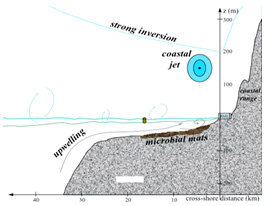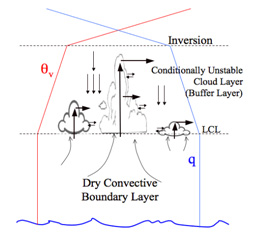
Coupled Ocean/Atmosphere Boundary Layers
The Pacific High drives strong alongshore winds during late spring to early autumn. The strong and steady winds at the continental margin, reinforced by the strong land-sea thermal gradients, impels the California Current equatorward. The consequent Ekman transport offshore pulls cold, nutrient rich deep water to the surface. The results are atmospheric downwelling under the High and oceanic upwelling which creates two adjacent, shallow planetary boundary layers filled with great biological productivity due to the deep water nutrient injection from the dynamically induced upwelling.


